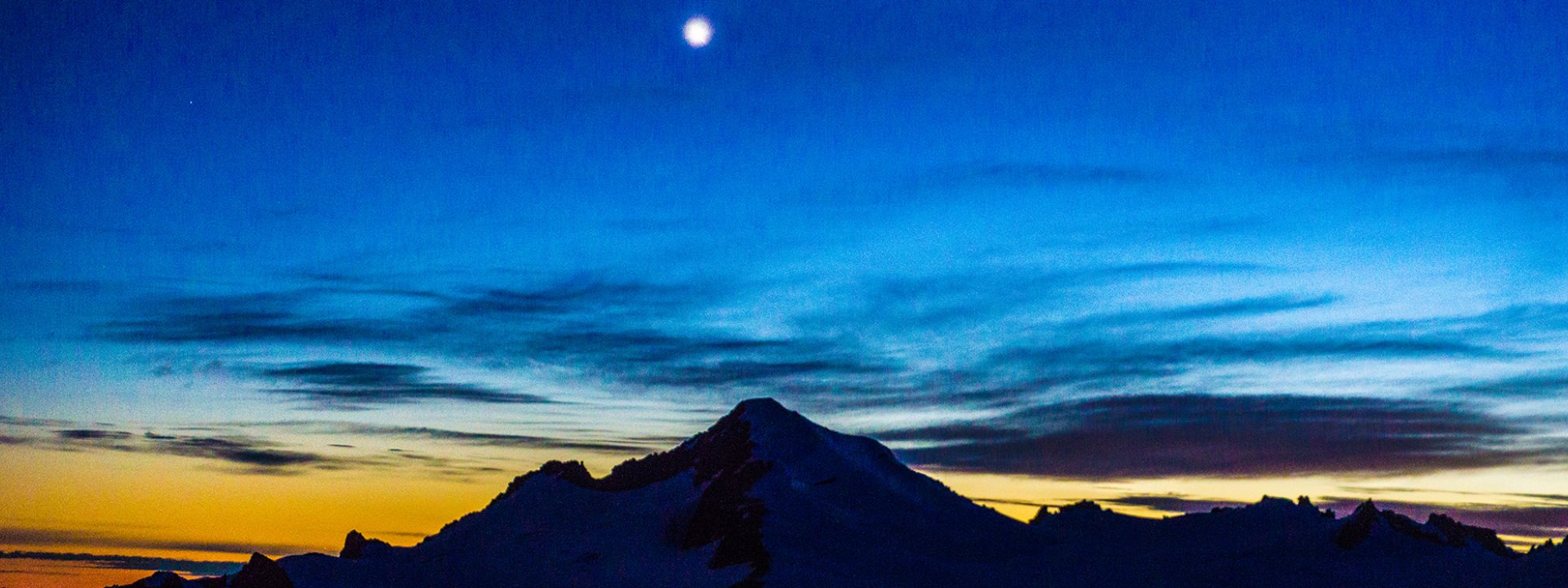A Useful Reminder:
Remember, nothing can ruin a day in the outdoors faster than having the wrong clothes for the weather at hand. All our programs, especially backcountry skiing, are subject to rapid and severe changes in the weather. Select garments that are warm, lightweight and durable. Generally speaking, the best arrangement is to think in terms of layers - a system that dries quickly, allow flexibility and resists wind, water and abrasion. If you have doubts about a specific garment's appropriateness confer with your guide in advance about conditions you are most likely to experience. In many circumstances we have recommended specific products or brand names. There are many comparable products out there: these are only personal favorites. We are more than happy to advise you on equipment if you have questions.
Clothing:
Carry items that are breathable, allow flexibility, resist wind and water, and based on a layering system. Some of the clothing and gear below are season dependent. Please confer with your guide about current conditions and/or if you have any questions. Many of the items listed below are available as rental gear from the Goat's Beard or Winthrop Mountain Sports.
- Socks - Wool or synthetic. Avoid cotton. A single light-weight pair is best.
- Soft Shell Pants - Synthetic preferred. Pants made from Schoeler Fabric such as Patagonia's "KnifeRidge" Pants work well. Make sure the cuffs of the pants fit over your touring boots.
- Long Underwear Top - Polypropylene or wool recommended.
- Warm long-sleeve shirt - A light fleece or wool top. Patagonia's R1 is ideal.
- insulated Jacket - Synthetic or Down. Patagonia's "Nano-Air" or "Nano Puff" are good examples.
- Shell Jacket - GoreTex parka with hood.
- Shell Pants - Optional - with good soft shell pants GoreTex pants are not necessary during the ski day but are recommended for the snowmobile ride.
- Gloves - Two pairs. One insulated pair with a shell (mittens are also acceptable) and one lighter-weight pair to use while traveling uphill.
- Warm Hat - Wool or fleece hat.
- Sun Hat - Quick drying preferable.
Skiing/Riding Gear
- Boots - Alpine touring, plastic telemark or comfortable snowboard boots are recommended. Lighter, softer boots are typically better for touring while stiffer, heavier boots provide more downhill control. Strive to find a happy medium.
- Skis or Splitboard - In general the wider the better. Modern skis seem to get wider and wider each year, yet still ski a variety of snow conditions well. For AT and Telemark skis we recommend skis with a waist width in the 95 to 120 range. For splitboards we recommend going a little longer and setting up your stance for riding deep snow.
- Poles - Adjustable poles are recommended. For the snowboarders we recommend 3-section poles so they fit on your pack without getting in the way.
- Ski Straps - used for holding your skis together on your pack or your shoulder.
- Climbing skins - These should be trimmed to fit the shape of your ski. If your skins are too skinny they will not work. Make sure your skins cover your ski bases well, with a maximum only a few millimeters of base showing at the waist of the ski.
- Transceiver/Beacon - We will supply you with a BCA Tracker or Tracker 2 transceiver to use during your trip. If you would prefer to use your own digital beacon you are welcome to bring it. Please make sure your batteries are fresh.
- Helmet - Optional. If you typically backcountry ski with a helmet we recommend you bring one. Just make sure you have a good way of carrying it on/in your pack on the way up. They are also nice for the snowmobile ride.
- Shovel - Collapsible avalanche shovel. If you need a shovel NCMG can provide one.
- Probe - These can also be provided by NCMG if you do not own one. Ski poles that turn into probes are not adequate.
- Pack - Around 2,000 - to 2,500 cubic inches, or 30 to 40 liters. Packs that have dedicated ski features such as snow tool compartments and ski carrying systems are nice but not required.
- Headlamp - A necessary tool for the short winter days. A lightweight LED is recommended.
- Water Bottles and/or Thermos - 2 liters. If you use a hydration bladder you must use an insulated tube to make sure it does not freeze.
- Food - Enough lunch food for a high calorie day.
- Sunscreen and Lib Balm - SPF 30 or higher
- Sunglasses - Changeable or Photochromic lenses are nice for variable light conditions. Consider using retention straps.
- Goggles - Essential when it's dumping or skiing face shot powder. Also nice for the snowmobile ride. For very stormy days and extra pair may be a good idea.
- Foot Protection - For blisters and hotspots. Moleform, athletic tape, Spenco's second skin all work well.
- Repair Kit - Bring any spare parts specific to your bindings. The guides will carry a full repair kit so keep yours light.
- Camera
- Pocket Knife - Keep it simple and light.



